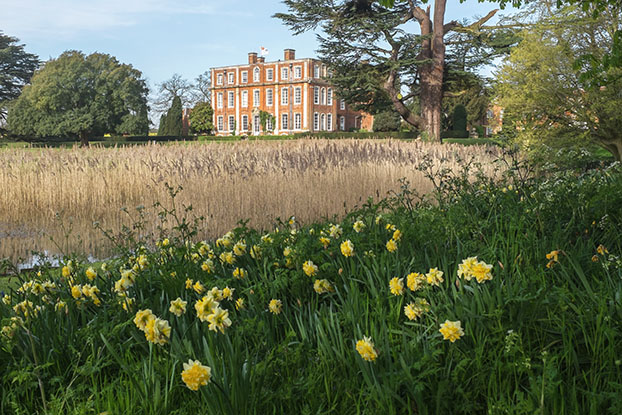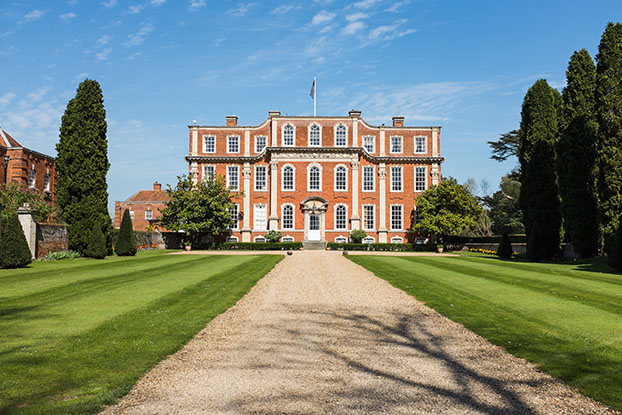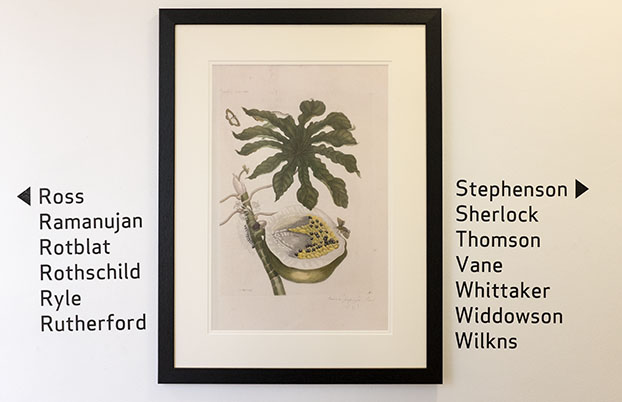The EPSRC Network Numerical Algorithms and High Performance Computing, coordinated by David Silvester and me, came to the end of its three-year term in May 2014. One of our final activities was a two-day Creativity Workshop, held at Chicheley Hall just before Easter.

The workshop was advertised to network members and we were able to accept all applicants. The 23 attendees comprised PhD students, postdoctoral researchers, faculty, and HPC support experts from Cambridge University, the University of Edinburgh, Imperial College, The University of Manchester, MIT, NAG Ltd., Queens University Belfast, STFC-RAL, UCL, and the University of Tennessee at Knoxville, along with an EPSRC representative.
The workshop was facilitated by creativity expert Dennis Sherwood. I explained the idea of these workshops in an earlier post about a creativity workshop we held for the Manchester Numerical Analysis Group last year. The procedure is for the attendees to work in groups tackling important questions using a structured approach that encourages innovative ideas to be generated and carefully assessed and developed. The key ingredients are
- a group of enthusiastic people,
- careful planning to produce a set of nontrivial questions that address the workshop goals and are of interest to the attendees,
- a willingness to adapt the schedule based on how the workshop progresses.

The workshop was targeted at researchers working at the interface between numerical analysis and high performance computing. The aims were to share ideas and experiences, make progress on research problems, and identify topics for research proposals and new collaborations.
The topics addressed by the groups were sensitivity in sparse matrix computations; programming languages; deployability, maintainability and reliability of software; fault-resilient numerical algorithms; and “16th April 2019”.
The notes for the last topic began “It’s 16th April 2019, and we’re celebrating the success of our network. What is it, precisely, that is so successful? And what was it about the decisions we took five years ago, in 2014, that, with hindsight, were so important?”. The discussion led to a number of ideas for taking the activities of the network forward over the coming years. These include
- organizing summer schools,
- producing a register of members’ interests and areas of expertise,
- exploiting opportunities for co-design across communities such as algorithm designers, NA specialists and domain scientists, and
- creating opportunities targeted at early career members of the network.
As an ice-breaker and a way of the participants getting to know each other everyone was asked to prepare a flip chart containing a summary of their key attributes, why they were attending, and something they have done that they feel particularly good about. These were presented throughout the two days.

Dennis Sherwood has produced a 166-page report that distills and organizes the ideas generated during the workshop. Attendees will find this very useful as a reminder of the event and of the various actions that resulted from it.
The Venue

Chicheley Hall, is a historic country house located near Milton Keynes. It was purchased a few years go by the Royal Society, who turned it into a hotel and conference center, and it houses the Kavli Royal Society International Centre. It’s a terrific place to hold a small workshop. The main house and its meeting rooms have a wonderful ambience, the 80-acre grounds (complete with lake and dinosaur sculpture) are a delight to walk around, and each of the 48 bedrooms is named after a famous scientist.


Photo credits: Nick Higham (1,2,4,5,6), Dennis Sherwood (3).
Addendum (July 29, 2014)
- A 2011 article The Story of Chicheley Hall by Peter Collins and Stefanie Fischer describes the history of the hall, which goes back to the 1086 Domesday Book.
- The dinosaur model that I saw in the grounds is described in the blog post Milton Keynes: where giant pterosaurs go to die.
